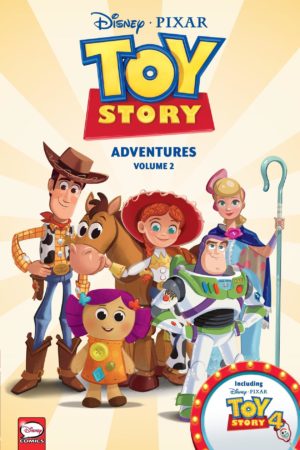Review by Frank Plowright
One of four longer stories in this two hundred plus page collection concerns the cast of Toy Story having their own campfire party in Andy’s room while he’s away at a campfire party elsewhere. After Rex’s unpopular attempt at a campfire song, Hamm suggests scary campfire stories as a camp-out tradition, but they’re no better, as what’s scary to one toy has little effect on the others. Each of them tells a story, and the rest of the toys all think it’s dull, and that’s what reading this collection is like. It takes characters we know and love, gives them their very basic personalities and throws them either into a series of really feeble gag stories running between one page and five, or into twenty page adventures by Tea Orsi that seem so much longer.
Dark Horse have apparently reprinted material originally produced in Italy, and even allowing the stories are intended for younger readers there’s so little inspiration to them. The Toy Story cast are run through a series of lame scenarios devoid of the spark that made them so entertaining in the films. In another of Orsi’s stories Woody stresses that they have to be very careful with Andy’s map, then says it again, and again. He’s just about to repeat himself again, but this time Jesse and Buzz finish the sentence. That’s a couple of pages before the map blows out of the tent. Perhaps the thinking is that if even the youngest reader can predict what’s going to happen then the stories are empowering for children. ‘Woody’s Star’ on the sample art is entirely representative of the shorter strips. Would a five year old even understand the concept of seeing stars these days?
If the writing’s not great, at least the artists present us with lively two-dimensional versions of the Toy Story cast. Amy Mebberson draws the other sample art, and Valentino Forlini or Luca Usai more of the gag strips than other artists. All of them are good at presenting the cast and their individual personalities.
Most strips are set in the Toy Story 2 era, but the final quarter of the book introduces the new creations from Toy Story 3, setting the strip in the nursery or in Bonnie’s house, but doing nothing for the overall quality. The only redeeming factor besides the art is the sheer number of strips here, surely enough to keep children quiet an entire afternoon if they read from start to end. Volume 2 follows, jumping forward to the Toy Story 4 era.




